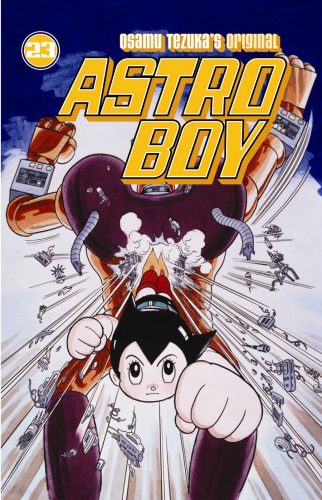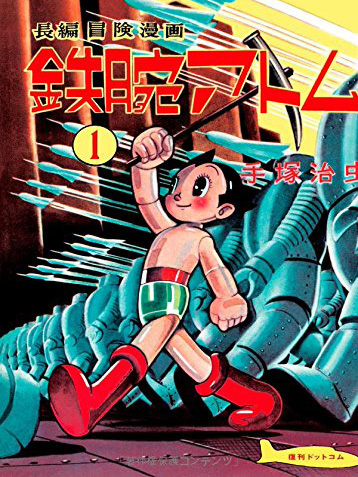
Manga has been an integral part of Japanese pop culture for over 50 years, but it wasn’t until the early 2000s that it gained a real foothold in the West. Today, we’ll go through a short history of manga’s introduction and rise in popularity in America, from the earliest localizations to the streaming culture of today. Let’s take a look!
Early Attempts at Importing Manga

Comics have, of course, been published in America since the ‘30s, but superhero comics and other graphic novels have always occupied a niche market of young children and dedicated adults. And once they stopped being sold in grocery stores, the only place to get your comic fix would’ve been in a specialist shop that not every town even had. Unlike Japan, where cute mascot characters were so ubiquitous that they showed up on road signs and in hospitals, comics in America just didn’t have the same kind of all-encompassing presence.
But that didn’t stop American publishers from trying to import manga! To appeal more to Western tastes, early editions of Astro Boy (1965) and Battle of the Planets (1979) were remade from the ground up to look like traditional superhero comics. Barefoot Gen (1979) was the first manga released with its original art intact, although its publication was funded by a charity that demanded nothing be changed.
In the late ‘80s and ‘90s, companies began to crop up whose sole purpose was importing Japanese manga into the Western world—Mixx (later known as Tokyopop) and Viz were the main players, while traditional comic publishers like Dark Horse also dabbled in localization. They kept the artwork the same but flipped everything horizontally so that American fans wouldn’t have to read backward. This approach had its upsides but the flipped art didn’t look as natural and sometimes even caused problems with the story—Tokyopop’s ‘90s release of Parasyte had to rename Shinichi’s parasitic right hand “Lefty”, for example. These early publications were moderately successful, but something was missing...
A 100% Authentic Experience
In 2002, Tokyopop came out with its “100% Authentic Manga” line—translated manga with unflipped art and few, if any, alterations to the original material. They added the famous “Stop! This is the back of the book!” page to instruct English speakers how to read manga in its native format and structured the books to be the same size and length as Japanese tankoban volumes. Tokyopop made their manga widely available in bookstores like Borders (may it rest in peace) and Barnes & Noble instead of just comic shops and hoped for the best.
Luckily, this line was a hit! It was essentially a recreation of Japanese comic culture in miniature, so young kids who had grown up on anime loved the idea of keeping up with their favorite stories by picking up a new volume every month or so on a trip to the mall and watching their collection grow little by little. The low cost and frequent release schedule of Tokyopop’s manga titles let American fans feel invested, rather than having to deal with a watered-down version of a foreign work many months or years after it originally released in Japan.
That same year, Viz began publishing a translated monthly version of Shounen Jump and curated more female-oriented manga into a sister magazine called Shoujo Beat. Since anime had permeated so deeply into the American consciousness by the early 2000s, this authentic facsimile of Japan’s manga serialization actually worked!
Streaming Culture
Nowadays, we’ve grown even closer to the idea of getting our favorite anime and manga at the same time as Japanese fans. People naturally still buy tankoban volumes, but that’s not the only way to follow manga anymore, so a collector’s shelf may only hold their favorite series that they decided to buy in paperback for closer reading.
Instead, most of today’s manga fans read the latest chapters week by week on subscription streaming sites like Crunchyroll, Shounen Jump’s website, ComicWalker, and ComiXology. These legal sites are generally very good about publishing chapters as close as possible to their release in Japan, but some impatient fans (or those whose favorite manga isn’t popular enough to be picked up by legal sites) may settle for illegal fan scans so they can be up to date even faster. In this vastly interconnected world, it’s hard to imagine that just over 20 years ago, officially translated manga were shockingly rare.
Final Thoughts
Join us next time as we discuss the impact that manga had on American (and Canadian) comic readers. We’ll take a look at some Original English Language manga and other Japanese-influenced comics, as well as a few other strange quirks that cropped up after the manga invasion.
What did you think of our overview? Do you remember buying Tokyopop’s manga volumes in bookstores? What was your favorite manga as a kid? Let us know in the comments, and thanks so much for reading!
[PR_honeys title="Honeys Anime Recommends!" text="Knowing where to start is hard. Do you have an idea that you want to make into a manga or are you already working on one? Looking for help? We've got you covered. If you are looking for help, we recommend the “Manga Drawing / Comprehensive Course” from Manabi Journey. The course has produced over 100 professional manga artists in Japan. With complete support in English while learning directly from the professionals, you can put your mind at ease and your pen to work! Check it out by clicking on the banner below!" url="https://tour.manabijourney.jp/mangadrawing//?utm_source=honeysanime&utm_medium=banner700x200&utm_content=inside-single&utm_campaign=manabijourney-mangadrawing-comprehensive2" onclick="ga('send', 'event', 'link_external', 'click', 'to_manabi_journey_manga_comprehensive2@single_pr');" img=' ']
']
Recommended Post
[Editorial Tuesday] The History of Manga
Recommended Post



